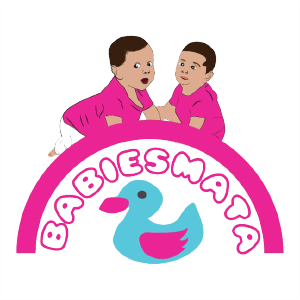How to Handle Separation Anxiety in Toddlers

It\’s normal for your child to cry when you leave, but it\’s still upsetting. Leaving your child is never easy, and it\’s even more difficult if they call and clings to you every time you go. Separation anxiety, on the other hand, is a standard part of growing up. It\’s a sign of a child\’s attachment to his parents. Finally, this strong sense of security will aid your child\’s development into an intelligent toddler.
When Does Separation Anxiety Start in Toddlers?
Separation anxiety can be traced back to cognitive development. During the first few months of life, your baby has no idea that they are self-sufficient. That\’s why young babies jump from one lap to the next with ease.
Your baby, however, starts to differentiate between people around the age of eight months, and he develops deep emotional attachments to his caregivers. They are also learning about object permanence which means that objects and people (including Mom and Dad) continue to exist even though she can\’t see them. When you combine all of these developmental advancements, you have the perfect formula for separation anxiety.
Separation anxiety in children usually begins between the ages of 8 and 14 months. It can show up when you\’re dropping your child off at daycare—or even when you\’re just going to the bathroom. Separation anxiety resurfaces about 15 months, just as it seems Baby is slowly adapting. This time, though, it\’s a little different: your child knows that you\’re going somewhere else when you go, but she has no idea whether you\’ll be gone for a minute or forever.
Factors That Affects Separation Anxiety
Your child\’s reaction rate is determined by their disposition. Other considerations come into play as well: Infants who have been introduced to caregivers other than their parents at an early age are more likely to cope with separation in later months. If you are leaving your baby tired, hungry, or sick, she would most likely give you a hard time.
Tips for Separation Anxiety in Toddlers
Although your baby\’s cries can persuade you to cancel your plans, doing so would exacerbate the situation the next time you need to leave. Here\’s what you can do to console your baby.
Practice separation: Play peekaboo to reinforce the idea that you\’ll still return to make break less of a shock. You may also send stuffed animals or dolls on mini-adventures before returning them to your child. Finally, consider leaving him with someone he knows and trusts for a few brief periods—a half hour to an hour. Try a babysitter until he sees that you still return (and that the other caregivers are all friendly and loving).
Develop a goodbye ritual: Routine is particularly relevant for younger babies. Build a farewell routine that will relax both of you while also preparing Baby for separation. Just before you step out the door, sing a little song, give your child a hug and kiss, or wave. Discover what works best for you and stick with it.
Resist sneaking out. Trying to leave while the child isn\’t looking or running out when the child is engaging in an activity without saying goodbye is a significant mistake. The child may become nervous or distressed because she did not have the opportunity to say goodbye or kiss goodbye.
Don’t draw out leaving: Don\’t be shocked if your baby cries when you go; it\’s normal and safe. A solid emotional base is the ability to be conscious of and articulate one\’s feelings. That does not, however, imply that you should postpone your departure. Trying to console him would likely only add to his suffering. Instead, hug and kiss your child and tell him you love him before handing him over to the caregiver. He\’ll stop crying eventually, and you\’ll stop feeling bad.
Control your emotions. Keep back the tears, as tricky as it might be—at least before you get to the car. If your child sees you sad, he will become even more anxious.
Plan a fun reunion: The importance of happy reunion rituals in strengthening the parent-child bond and reducing separation anxiety cannot be overstated. If she approaches you when you arrive, give her a big hug and stay with her for a few minutes before returning inside. Get down and play with her for a few minutes if she waves a toy. These happy returns teach your child that no matter how sad it is for Mommy and Daddy to leave, it is still good when they return.
Always keep in Contact. It doesn\’t matter how often it tends to happen; your heart will break when your child cries when you leave. Checking in during the day isn\’t anything to be ashamed of. It will provide you with peace of mind and reduce your remorse about leaving.
Establish a tranquil bedtime. Dealing with nighttime separation anxiety in babies? Create a bedtime routine that involves stuff like a bath, reading, and a goodnight kiss. This will help Baby cope with the impending separation. You can also record yourself reading stories or singing lullabies and play it back for her when she\’s lonely or afraid.
Conclusion
Children are developing, and they are growing attached to their parents or caregivers. Helping them understand how self-sufficient they are is a gradual process that you should rush. Separation anxiety can be corrected or avoided in children, follow our highlighted steps. We hope this could help; cheers!!








